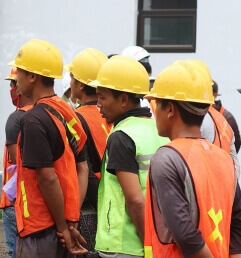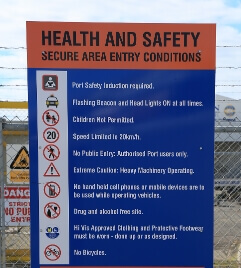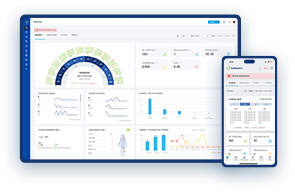
Construction Safety Meeting – All You Need To Know
Construction sites are often dangerous places, with hazards such as falls, electrical shocks, and accidents involving heavy machinery.
To help mitigate these risks, construction companies hold regular safety meetings to discuss potential hazards, identify ways to prevent accidents, and promote a culture of safety among workers.
Safety Meetings are an essential part of any construction project, as they help to ensure that workers are aware of the potential risks and are equipped with the knowledge and tools needed to prevent accidents.
These meetings also provide an opportunity for workers to share their experiences and ideas for improving safety on the job site.
Purpose of Construction Safety Meetings

The primary purpose of these meetings is to identify and mitigate potential hazards that workers may encounter on the job. By discussing these hazards, the team can come up with a plan to avoid them, which helps to keep everyone on the site safe.
Another goal of construction safety meetings is to improve safety awareness among workers. By discussing past incidents or near-misses, workers can learn from these experiences and avoid making the same mistakes in the future.
These meetings can also serve as an opportunity to review safety procedures and policies, ensuring that everyone is on the same page and knows how to respond in case of an emergency.
Construction safety meetings can help to promote a culture of safety on the job site. By regularly discussing safety, workers can become more aware of the importance of taking precautions and looking out for one another. This can lead to a safer work environment and a more positive workplace culture overall.
Meeting Participants and their Roles:
Construction safety meetings are typically attended by a variety of individuals who are involved in the project. These can include construction managers, supervisors, workers, safety officers, and even subcontractors.
Construction managers are responsible for overseeing the project as a whole and ensuring that it is completed safely and on time. They are often the ones who schedule the safety meetings and ensure that all necessary individuals are present.
Supervisors are responsible for overseeing the work of the construction workers on a daily basis. They play a critical role in ensuring that safety procedures are followed and that any potential hazards are identified and addressed.
Construction workers themselves are also important participants in these meetings. They are often the ones who are most directly affected by potential hazards on the job site, and their input and feedback can be invaluable in identifying and mitigating these hazards.
Safety officers are individuals who are specifically trained to identify potential hazards and ensure that safety procedures are being followed. They are usually responsible for leading the safety meetings and providing guidance to other participants.
Subcontractors may also be present at construction safety meetings, especially if they are responsible for a specific aspect of the project. They are also required to follow the same safety procedures as other participants, and their input can be important in identifying potential hazards that may affect their work.
Meeting Structure

In general, construction safety meetings typically involve a combination of presentation, discussion, and hands-on activities to ensure that all participants are engaged and that the necessary information is being conveyed.
The meeting may be led by a safety officer, a supervisor, or another individual who is familiar with the project and the safety procedures. The leader is responsible for setting the agenda for the meeting and ensuring that all necessary topics are covered.
Topics covered in construction safety meetings can vary widely depending on the needs of the team and the stage of the project. Some common topics might include the following:
- Fall protection
- Hazard identification
- Electrical safety
- Personal protective equipment
- Hazard communication
- Emergency procedures
During the meeting, the leader may begin with a presentation on the topic at hand, using visual aids or other tools to help illustrate key points. Following the presentation, there may be time for discussion and questions, allowing participants to clarify any information and share their own experiences and knowledge.
Hands-on activities can also be an effective way to reinforce key safety procedures and ensure that all participants are familiar with the necessary equipment and techniques. These might include practicing ladder safety, identifying hazards in the workplace, or conducting a mock emergency response drill.
The structure of construction safety meetings should be designed to engage all participants and ensure that all necessary information is conveyed effectively.
Common challenges and potential solutions
While construction safety meetings are a crucial part of maintaining a safe work environment, they can also present some challenges. Some common challenges that may arise during these meetings include:
Language barriers: In a diverse work environment, language barriers can make it difficult for all participants to fully understand the safety information being presented. This can lead to misunderstandings and a lack of engagement during the meeting.
To overcome language barriers, safety officers and managers can provide safety information in multiple languages and provide translators or interpreters as needed. Visual aids, such as diagrams or videos, can also be helpful in conveying safety information.
Disengaged participants: Some workers may not fully engage in the safety meeting, which can undermine the effectiveness of the meeting and put themselves and others at risk.
To encourage more engagement during safety meetings, managers and safety officers can make the meetings more interactive, incorporating hands-on activities and open discussions. They can also emphasize the importance of safety and how it affects everyone on the job site, which may help motivate workers to take safety seriously.
Tips for Successful Construction Safety Meetings:
To ensure that construction safety meetings are effective and engaging, here are some practical tips to keep in mind:

Set clear objectives: Before the meeting, clearly define the objectives and goals for the meeting. This will help keep the meeting focused and ensure that all necessary safety topics are covered.
Use visual aids: Visual aids such as diagrams, pictures, or videos can help workers understand safety concepts more easily. They can also help to break up long presentations and make the meeting more engaging.
Involve workers in the discussion: Encouraging worker participation and input during the meeting can help promote a culture of safety and help ensure that everyone is engaged and aware of the safety protocols. Workers may have unique perspectives and insights that can help identify potential hazards and suggest solutions.
Make it interactive: Consider incorporating hands-on activities or demonstrations into the meeting to make it more interactive. This can help reinforce safety concepts and keep workers engaged throughout the meeting.
Follow up: After the meeting, follow up with workers to ensure that they understood the safety information presented and are implementing the appropriate safety procedures. This can also help to reinforce the importance of safety and encourage workers to take it seriously.
Download Free Checklists:
Construction HSE Inspection Checklist
OSHA Construction Inspection Checklist
Construction Site Inspection Checklist
Top 10 OSHA Inspection Checklists

Ramesh Nair is the Founder and Principal Partner of Niyati Technologies, the company behind Safetymint.
He’s a dedicated advocate for workplace safety. Ramesh firmly believes that every individual deserves to return home safely after a day’s work. Safetymint, the innovative safety management software, emerged from this conviction. It’s a platform designed to streamline safety management, empower safety professionals, and enhance safety in workplaces.
Through his blog, Ramesh shares insights, best practices, and innovative solutions for workplace safety. Visit his social media profiles to follow him for regular updates.




